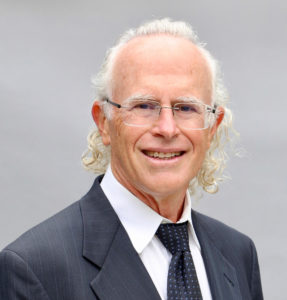Adding the Personal Touch to Memory Care: A Conversation with PointClickCare’s Travis Palmquist and Murry Mercier
The majority of long term care communities highlight the importance of personalization to providing the best quality care to residents. And no wonder—research shows that knowing the needs of residents can better help to develop and implement successful care plans. Personalized care may be even more important for Memory Care, as it requires specific knowledge of each resident—in the past and in the present—to be successful. But with the day-to-day demands, coupled with high staff turnover, it can be challenging to provide. We recently spoke with PointClickCare’s Travis Palmquist, Vice President and General Manager of Senior Living, and Murry Mercier, Senior Living Team Lead, about the benefits and challenges of personalized care—and how the right tools can help senior living care staff provide for the individual needs of Memory Care residents.
Why is personalized care especially critical to Memory Care communities?
Murry Mercier (MM): In any community, it’s important to join the residents where they are in their life, in their mental and physical capacity, in their environmental capacity, and in their emotional capacity, so you can understand how to best support them. This is commonly referred to as “joining them in their journey.”
This becomes increasingly important with Memory Care services. For these to work well, you need to know an individual deeply. Where they came from, their history, who they were—as well as who they are today. For example, I sat with a resident today who told me they were a pilot 50 years ago. That’s something that may be helpful to staff later. If there’s a way to put that into a system to share with other staff, it’s another tool to help start a conversation or find a new way to connect with that resident; possibly even de-escalate a future situation. By having a way to collect those details, we can create a better understanding of each resident—thus helping staff provide better support.
What are some of the biggest challenges of providing that level of care?
Travis Palmquist (TP): One of the biggest challenges is determining how to provide personalized care. What it is that your staff needs to do. There’s not a lot of standardization—there’s no one assessment or magic formula to making it happen, because truly personalized care is constantly evolving. You must be constantly learning, assessing, and updating a care plan based on what’s important to the resident and their family, and what’s necessary to help them reach their maximum level of living experience. There needs to be a way to capture resident information and then make it actionable—not just for one staff member on one shift but for all staff members across all shifts. You need tools that are thorough yet flexible enough to meet the needs of communities that are providing Memory Care. Whether you are talking about managing a person’s physiological challenges or the medications they are taking, when it comes to Memory Care, everything can change from day to day. You need the right tools to help you keep up with those changes.
How does having the right tools help with managing quality metrics?
TP: It’s about providing information so staff can do the right thing for residents consistently across shifts. It can be difficult when you have 20 to 30 residents, and staff on three different shifts trying to monitor and track developments or issues for each one. If you are documenting changes on a piece of paper, they can be lost or not communicated to the right people. But if you have technological tools that are easy to learn and utilize, care providers can understand and identify the right services to deliver to each resident consistently across all shifts. It makes it easy to do an assessment and identify risks—and then document them so the community can have a plan in place to address them. When you are able to tie assessments directly to a care plan, you can ensure you are delivering quality care every step of the way.
What about easing transitions for residents?
MM: Having technology in place that transfers pertinent information as a resident moves between environments is really important. Having a customizable tool that allows you to organize the most up-to-date information is incredibly helpful. It’s important that the next environment understands the holistic needs of a cognitively impaired individual. Knowing a resident’s tendencies and habits upfront can make all the difference.
Tell me more about the importance having real-time access to personalized resident information.
MM: You’re only as good as the moment you’re in. You need tools so staff members have the information they need at the moment they need it. Having the ability to access a full care plan—whether from a smartphone or a kiosk—offers staff the information they need to respond to whatever situation is at hand.
TP: Exactly. Having that kind of information can be important to de-escalating a potentially bad situation—which, unfortunately, is common in Memory Care. But, it goes beyond access to resident information. It’s a constant challenge to stay on top of the latest trends in training and education. And, when it comes to long term care, high staff turnover is a reality. Having real-time access to that information helps your staff do the right thing for residents on a consistent basis.
What are some of the biggest challenges to implementing these tools?
TP: You must have executive sponsorship and leadership who can articulate, champion, and sponsor the adoption of these tools. Adding them to your staff’s workflow can be disruptive because you are changing the way they work. There will definitely be an element of change management to deal with. But if you have that leadership support, if the tools you deploy are intuitive and easy to use, people will get on board. They’ll soon wonder, “How the heck did we ever do it the old way?”
What is the most important advice you have for community leadership considering technology solutions to help support personalized care?
TP: It’s not about deploying technology for technology’s sake. It’s about answering the care and service challenges your organization is experiencing and finding the right technology to overcome them. It may be an enhanced resident experience. It may be about improved quality or reduced risk. It may be about better capture for reimbursement. Whatever the challenge, you must be able to communicate your motivations and show how these tools can help your staff be more proactive. Leaders need to ensure they are focused on the value promise—because if you are, you’ll find success even if you hit a few bumps along the way.
MM: You may hit resistance to change—people often do. Spending time upfront to translate the value of the new technology so that your whole team understands will be what determines your success.
Finding easy, accessible ways to add that personal touch to care can make all the difference for residents in your Memory Care unit—as well as your overall long-term care community.
To learn how PointClickCare can help you better personalize care, visit their website (https://pointclickcare.com/) or reach out to a member of their team at 1-800-277-5889 (Press’1’) or info@pointclickcare.com.
I Advance Senior Care is the industry-leading source for practical, in-depth, business-building, and resident care information for owners, executives, administrators, and directors of nursing at assisted living communities, skilled nursing facilities, post-acute facilities, and continuing care retirement communities. The I Advance Senior Care editorial team and industry experts provide market analysis, strategic direction, policy commentary, clinical best-practices, business management, and technology breakthroughs.
I Advance Senior Care is part of the Institute for the Advancement of Senior Care and published by Plain-English Health Care.
Related Articles
Topics: Articles , Leadership











